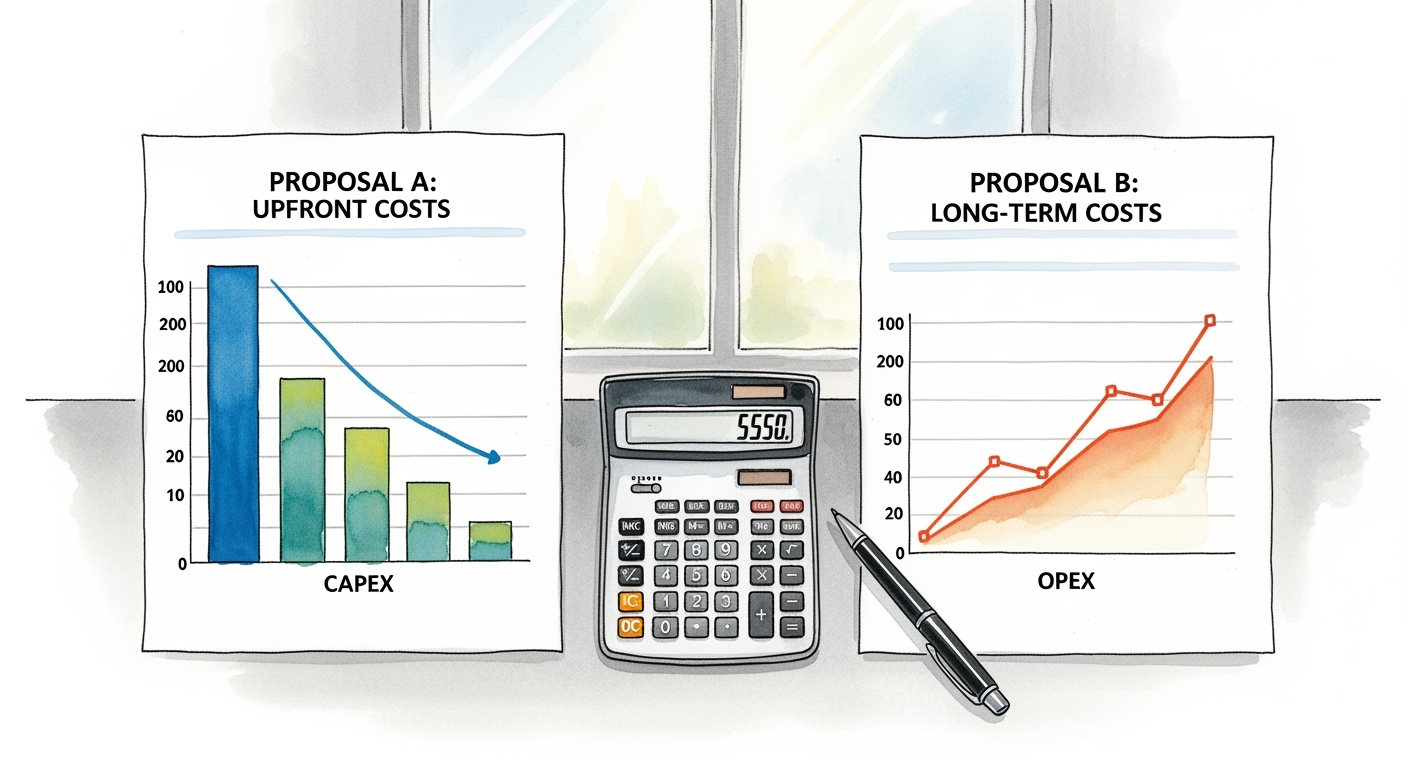Introduction
Negotiation is often viewed as a high-stakes conversation at the end of a deal. But in the real world of procurement, the groundwork for effective negotiation starts well before the negotiation table. It is embedded in the meticulousness of everyday due diligence and the choices that shape vendor relationships, define project timelines, and determine organisational value.
Negotiation is a highly process-driven function. To understand how to negotiate well, one must understand how procurement works, how vendors should be evaluated, and what can go wrong when the groundwork is not laid properly. This Whitepaper decodes the art of negotiation through first-hand operational experiences at RPSG Group. It offers deep insights into how negotiations, when done right, can bring immense benefits to the organisation.

The Beginning of Procurement Journey
Procurement, by definition, is broader than just purchasing. It involves planning, developing sourcing strategies, identifying needs, selecting suppliers, and conducting market research. Negotiating contracts, managing supplier relationships, establishing the total cost of ownership, and risk assessment and mitigation.
Purchasing, on the other hand, is more transactional, an immediate act of buying goods and services, and focuses on efficiently completing transactions.
Every procurement journey starts with a requirement, whether for a product, a service, or a combination of both. Understanding this initial ask is fundamental because it influences every subsequent step, from vendor selection to tendering and contract management.
In many cases, the requirement spans both goods and services. Here, the vendor is required to supply and execute the complete package as a Supply, Installation, Testing and Commissioning (SITC) job. A typical example might be setting up a new facility, where the vendor is expected to provide the materials, install them, test the systems, and ensure functionality before handover.
There are also cases where materials are provided by the organisation, and the vendor’s role is limited to execution. This is referred to as ‘free issue material’. It is uncommon, but very effective for cost reduction and quality assurance in high-value jobs that involve a substantial portion of bought-out items from vendors, where they typically do not add any value to the item. Examples include reinforcement steel in civil or structural jobs, and AC units for heating, ventilation, and air-conditioning (HVAC) projects.
Once the requirement is clearly understood, the next step is to identify the right pool of vendors. Pure supply, SITC, and service-only projects each demand a different vendor base, and with it, different terms and conditions.
Selecting the Right Vendor
Selecting vendors is about matching capabilities to requirements. Whether the need is only for supply, for service, or for SITC, the right vendor must have technical, commercial, and operational capabilities.
This is where the first critical bifurcation in the process appears, deciding between a limited tender and a public tender.
A limited tender involves inviting a selected set of pre-identified vendors to submit their quotes. These vendors are shortlisted based on prior knowledge, relevance to the project scope, and demonstrated capability. This approach provides control, speed, and relevance.
In RPSG Group, like in many other organisations, limited tenders are the standard, making up the vast majority of procurement activity.
Public tenders, which open bidding to all vendors, are usually resorted to in the case of exceptionally high-value projects, such as large-scale infrastructure, or where there are regulatory requirements. Public tenders demand a greater administrative load and are therefore not practical for time-bound, mid-sized requirements.
The Risk of Skipping Due Diligence
It is not uncommon for enquiries to be floated hastily, with little or no background checks. The consequences can be long-term.
In the case of a limited tender, once a vendor is invited, the expectation is that their credentials, financial strength, experience, and track record have already been verified. In such a scenario, disqualification of a lowest bidder (L1) vendor later, without justified technical reasons, opens up the process to challenges from vendors, auditors, and internal governance teams.

Who Owns the Due Diligence
Two primary stakeholders share the responsibility for vendor due diligence
1. User Department
The department that raised the requirement is best positioned to judge technical competence in terms of design, manufacturing, execution, and post-sales service.
2. Procurement Team
The procurement team owns the tendering process. In conjunction with the Finance and Legal teams, they are responsible for commercial diligence, such as assessing financial capabilities in terms of net worth, profit and loss (P&L) statements, turnover, financing arrangements, and compliance with legal and statutory requirements.
Why Performance History Matters
When evaluating a vendor, past work often speaks louder than credentials. Due diligence includes speaking to past customers. ‘Integrity’ is critical in due diligence.
For example, a well-designed office or custom furniture setup may look visually impressive. But has it held up over time? Was it delivered on schedule? Was it delivered within the planned cost? These questions can only be answered by speaking to people on the ground, such as project managers, end-users, or those who oversaw execution.
Visual inspection gives only part of the story. True evaluation requires a closer look at documentation, timelines, responsiveness, cash flow availability, execution capabilities in terms of quality, safety, environmental, social and governance (ESG) standards, and the long-term performance of the vendor.
The Role of Documentation
1. Financial strength
2. Technical capabilities
3. Relevant experience
4. Delivery track record
5. Performance metrics
6. Client feedback
In many cases, however, procurement managers make the mistake of treating PQ forms as routine paperwork, filled mechanically and filed away without discussion or verification.
This creates weak links in the procurement chain, where decisions are made without a robust base of information. When internal checks are done well, they significantly improve the chances of choosing the right vendor.
For floating tender enquiries, two critical documents are:
1. Bill of Quantities (BOQ)
A detailed inventory of work or items required. Each task is listed as a separate line item, with quantities and units of measurement. The granular breakdown allows for better evaluation of vendor quotes and proper tracking of deliverables later on. Technical specifications, drawings, and related documents are an integral part of the BOQ.
2. Internal Estimate
The Internal Estimate functions as the organisation’s benchmark against which vendor quotes can be measured. It is prepared and provided by the user department.
Together, the BOQ and the Internal Estimate ensure that vendor bids are comparable, negotiations are grounded in facts, and governance standards are maintained.
Separation of Roles to Safeguard Against Bias
1. User Department
- Defines the requirement and provides cost estimates
- Receives the materials, executes the jobs, and certifies the payments
2. Procurement Team
- Conducts the tendering process
- Finalises the orders and contracts
3. Finance Team
- Releases the payments
- Manages bank guarantees
Such separation of roles is essential to ensure transparency in the process, maintain proper governance, and uphold the maker-and-checker principle (where one person initiates a process and another independently reviews or approves it).
Technical Evaluation
Once offers are received, the process moves to technical evaluation. This step is non-negotiable in its importance.
Role of the User Department in Technical Review
The technical review of offers is handled by the user department.
Many times, especially in large SITC jobs, this assumes even greater importance since vendors are able to quote more effectively after gaining clarity on the Scope of Work. Discussions between vendors and the user department also help refine the BOQ, leading to optimisation of the requirement.
If the product fails to meet the exact requirement, no amount of cost savings can justify the purchase.

What Happens When Estimates and Quotes Do Not Converge
If the user estimates an item at ₹15,000 and the lowest vendor quote comes in at ₹30,000 (post final negotiations), the process flags an anomaly. It necessitates a re-evaluation:
- Was the user estimate inaccurate?
- Is the vendor inflating prices?
- Has there been a market change?
- Is there any other reason?
In such a case, the procurement team will ask the user department to recheck and validate their estimate, and, if applicable, provide alternatives in terms of vendor, requirement, or both.
Even in unfamiliar markets, a few phone calls can provide clarity. Without such research, inflated prices might go unnoticed.
Comparative Statements in Commercial Evaluation
Once technical evaluation is complete, commercial comparison has to be done through comparative statements. These statements provide an overall picture of the item-wise and total costs. Apart from direct costs, total costs must also account for various factors such as payment terms, warranty costs, etc., to enable a like-to-like comparison. In the case of equipment, total costs consist of Capital Expenditure (CAPEX) and Operating Expenditure (OPEX). Many times, it is observed that vendor rankings (i.e., Lowest Bidder 1, Lowest Bidder 2, etc.) change when comparing only CAPEX costs versus CAPEX + OPEX costs.
In the case of equipment, total costs consist of Capital Expenditure (CAPEX) and Operating Expenditure (OPEX). Many times, it is observed that vendor rankings (i.e., Lowest Bidder 1, Lowest Bidder 2, etc.) change when comparing only CAPEX costs versus CAPEX + OPEX costs.
For instance, if one vendor requires payment in 15 days and another in 30 days, the impact of interest cost must be factored into the total cost. This step can alter vendor rankings, sometimes moving an apparent L1 to L2, but it ensures a true apple-to-apple comparison.

Advances and Risk Purchase Clauses
Most of the time, vendors ask for advance payments to:
a) bind the buyer, and
b) partly compensate for their initial investments in executing the order.
It is essential that the advance amount is negotiated to the minimum possible level, and that too against clear security instruments such as bank guarantees.
Risk purchase clauses, which allow the company to reassign delayed or defaulted work to other vendors, must be backed by proper documentation. Invocation of this clause should be done only after ascertaining that the reasons are purely attributable to the vendor.
Liquidated Damages (LD) Enforcement
Liquidated Damages (LD) enforcement refers to the process of claiming pre-agreed financial compensation from a vendor for delays in contract performance.
LD clauses are often overlooked despite being contractually binding. In some cases, internal resistance within organisations can delay or derail LD enforcement, even when justified. Waiving LD without a formal, documented justification and the necessary approval should not be allowed under any circumstances.
Documentation for Audit Preparedness
Proper documentation is the backbone of the procurement process and integrity. Every order file should be complete, containing all details such as emails (tender enquiries, correspondences, etc.), offers from vendors, technical evaluation sheets, comparative statements, notes for approval, letters of intent / award (LOI / LOA), purchase orders, contracts, and so on.
Every deviation, for example, selecting the second-lowest bidder (L2) over the lowest bidder (L1), must be recorded with the necessary approvals at the time the decision is made. Backdated justifications are easily exposed during audits or legal proceedings.
Contractual Language
Contractual language must be precise, and documentation must always be self-explanatory, standing on its own even years later.
Breaking Down the Price Variability
Unlike standard commodities, services often show wider price ranges. The solution lies in detailed analysis with a proper breakdown of each line item.
Every job cost typically comprises three primary elements:
- Material Costs
- Labour Costs
- Overheads and Profit
For example, the cost of getting a table constructed:
1. Material Costs
Wood, Veneer, Handles, Channels, etc
2. Labour or Construction Costs
Craftsmanship hours, Assembly
3. Profit and Overheads
Profit margin, Overhead expenses

Negotiations based on the breakup of these three major elements help in analysing variations in costs much more effectively. Further, the greater the granularity available in the cost details, the better the variations can be controlled.
Why Correct Pricing Is Missed Despite Negotiation
In several instances, vendors, though offering acceptable technical specifications, fail to engage directly with the source or manufacturer. Instead, they rely on local dealers or intermediaries, missing out on the most competitive pricing available.
Case Examples:
1. Procurement of Cables
One of the System Integrators (SIs) quoted prices for a particular cable based on dealer rates. However, upon checking the prices directly with the Original Equipment Manufacturer (OEM), the procurement team obtained substantially lower prices. Without this due diligence, the order would have been placed at higher prices for the referred cable.
2. Landline Phones
In another case, a branded landline phone was quoted at ₹X by a vendor. Upon checking the prices with a national distributor, a reduction of almost 40% was achieved. With further discussions with the OEM, the reduction reached 50%. This clearly indicates the cost loading at every stage of distribution and highlights the importance of obtaining prices directly from the OEM.
3. Premium Luggage Trolleys
An example involving premium luggage trolleys highlights the disparity in pricing. At the retail level, this particular model of trolley did not offer any discount, even for large volumes, although all other models did. However, discussions at the corporate level of the brand, first with the Regional Sales Head and eventually with the National Sales Head, led to a discount of about 40%.
These cases underline a critical lesson: effective negotiation is not just about bargaining on quoted prices, but about challenging assumptions, validating sources, and engaging directly with the right level of the supply chain.
Why In-Person Negotiation Matters

Negotiation is both an art and a science. It is an art because it involves human and intuitive elements, and it is a science because it requires a structured and analytical approach, numerical calculations, financial analysis, and logical thinking to achieve effective outcomes.
One may begin with spreadsheets, but closing the deal often requires psychological finesse.
High-value negotiations are best handled face-to-face. This allows one to read expressions, interpret body language, and spot cues that would otherwise go unnoticed. Physical presence can signal seriousness and command respect, which in turn can drive better outcomes.
During negotiations, phrases like “This is beyond me” or “I’ll need to speak to my senior” are clear indicators that it is time to escalate the discussion to the next level, usually with someone more empowered to make pricing decisions.
When Constraints Apply
Not every deal allows room to manoeuvre. In certain high-profile or time-sensitive projects, negotiation must be handled delicately. In such cases, delays are not an option. While discounts may still be possible, they are earned through rapport, not pressure.
Attention to Details
Routine tasks often appear straightforward but can conceal many complexities. Procurement officers must visit physical sites from time to time to understand the on-ground reality. Moreover, a deep understanding of the items, equipment, and/or the services being procured is absolutely essential for effective procurement. This understanding helps in:
1. Achieving clarity in the BOQ
2. Optimising the requirement
3. Conducting effective negotiations with vendors by discussing elemental costs of each item, equipment, or service
Lack of clear specifications can lead to significant price variations and disagreements over the quality of materials supplied.
Specific Contract Clauses for Long-term Support
In equipment where modular items with different OEM support periods are involved, in case of replacement of the equipment, necessary provisions are to be made for the usage of items that are not out of support, so that the full effective life of such items is used. Particular care is to be taken in the case of medical equipment.
Buyback Logic and Market Benchmarking
The logic behind equipment buybacks lies in using benchmarks to establish a fair value. For instance, if a new machine costs ₹100 and it takes ₹60 to upgrade an old machine so that it performs like a new one, then the value of the old machine can reasonably be considered ₹40.
This is because the combined cost of the old machine’s value and the upgrade (₹40 + ₹60) equals the price of a new machine at ₹100. The difference between the cost of buying new and the cost of upgrading defines the worth of the older asset.
Benchmarking Intangibles

Unlike hardware, where costs can be itemised, creative and consultancy-based work is built on reputation, expertise, and intangible value.
There is no universal market rate, and services are often priced on credibility and consistent delivery over time. Property values, for example, may vary dramatically in the same locality based on the pin code and the developer’s reputation. Branding and perception drive premiums far beyond the cost of construction alone.
The same is true for creative and professional services. A well-regarded lawyer or designer may charge a significant premium for a short engagement; this is a reflection of their perceived value and market demand.
Organisations must balance the value received against their actual need.
When Small Components Can Dictate a Project’s Outcome
Even seemingly low-value, minor items, such as a single nut or bolt, can be crucial to the success of a project. The absence of such a component may cause significant delays or even halt an entire operation, especially in complex systems where every part plays a vital role.
Recognising the criticality of these small components allows the procurement professionals to prioritise procurement tasks appropriately and respond swiftly to user requests.
Inventory Management and Coding Practices

Effective inventory management faces challenges when identical products are listed under multiple names or not tracked properly.
Inventory coding should follow a uniform, catalogue-based structure, where codes reflect the item type, followed by unique numbers. Each product variant requires its own distinct code.
Poor data leads to system redundancy and obsolete inventory records. This is particularly critical for items which have a defined shelf life, like certain chemicals, food products, medical supplies etc., where expiry dates must be monitored. The importance of synchronising physical stock with system records cannot be overlooked.
Rotation of Procurement Professionals
One important suggestion is to encourage rotation among procurement staff across different categories. Rotation encourages broader exposure to a variety of products and contracts, which enhances overall knowledge and sharpens negotiation skills. Without it, procurement professionals tend to specialise too narrowly, limiting their understanding of the wider procurement landscape.
Given the increasing complexity of contracts and high-value investments, promoting rotation, or at least encouraging continual learning and cross-functional engagement, will help ensure procurement teams are better equipped to conduct detailed negotiations and make well-informed decisions.
Key Takeaways from Negotiation and Procurement Practices
1. Negotiation Starts Before the Table
Effective negotiation begins with diligent groundwork, proper vendor evaluation, and sound documentation, well before price discussions.
2. Shared Due Diligence
User departments, procurement, and finance/compliance teams each have defined roles in supplier evaluation to safeguard against bias and malpractice.
3. Documentation Helps Decisions
Forms like PQ (Pre-Qualification), BOQs (Bill of Quantities), and well-researched internal estimates ensure clarity for effective negotiation and audit.
4. Challenge and Verify Prices
Actively challenge quoted rates, verify them in real time with alternative vendors or direct sources, and beware of cartels and price inflation, especially in commodities and volume purchases.
5. Break Down Pricing
Always dissect overall costs (material, labour, overhead) to narrow the negotiation window and avoid accepting ambiguous or inflated pricing.
6. Negotiation is Both Science and Art
Look at cost breakdowns and benchmarks, but also judge timing, context, and vendor psychology while negotiating. In-person discussions often yield better results by allowing tactical escalation and rapport building.
7. Enforce Contractual Safeguards
Advances must be secured, and risk purchase or liquidated damages (LD) clauses must be enforced with documentation. Waiving LD needs proper, transparent justification and necessary approvals.
8. Contract Precision and Self-Explanatory Documentation
Clear, precise contractual language and documentation are essential to ensure clarity, compliance, the avoidance of disputes and varying interpretations, and organisational integrity.
9. Attention to Detail Protects Value
Item-by-item scrutiny prevents errors, discrepancies, and cost overruns.
10. Benchmarking Buyback and Intangibles
Logical benchmarking is needed for negotiating buybacks and creative or intangible services, where market prices are unclear and value is perception-driven.
11. Unseen Criticality of Small Components
Overlooking low-cost but essential items (e.g., nuts, bolts) can lead to delays. Procurement professionals must understand the operational significance of each component.
12. Inventory Discipline
Synchronisation between physical and system inventories is vital for accuracy and accountability.
For more information, please contact:
Sanjeev Agarwal
Head - Contracts, RPSG Group









